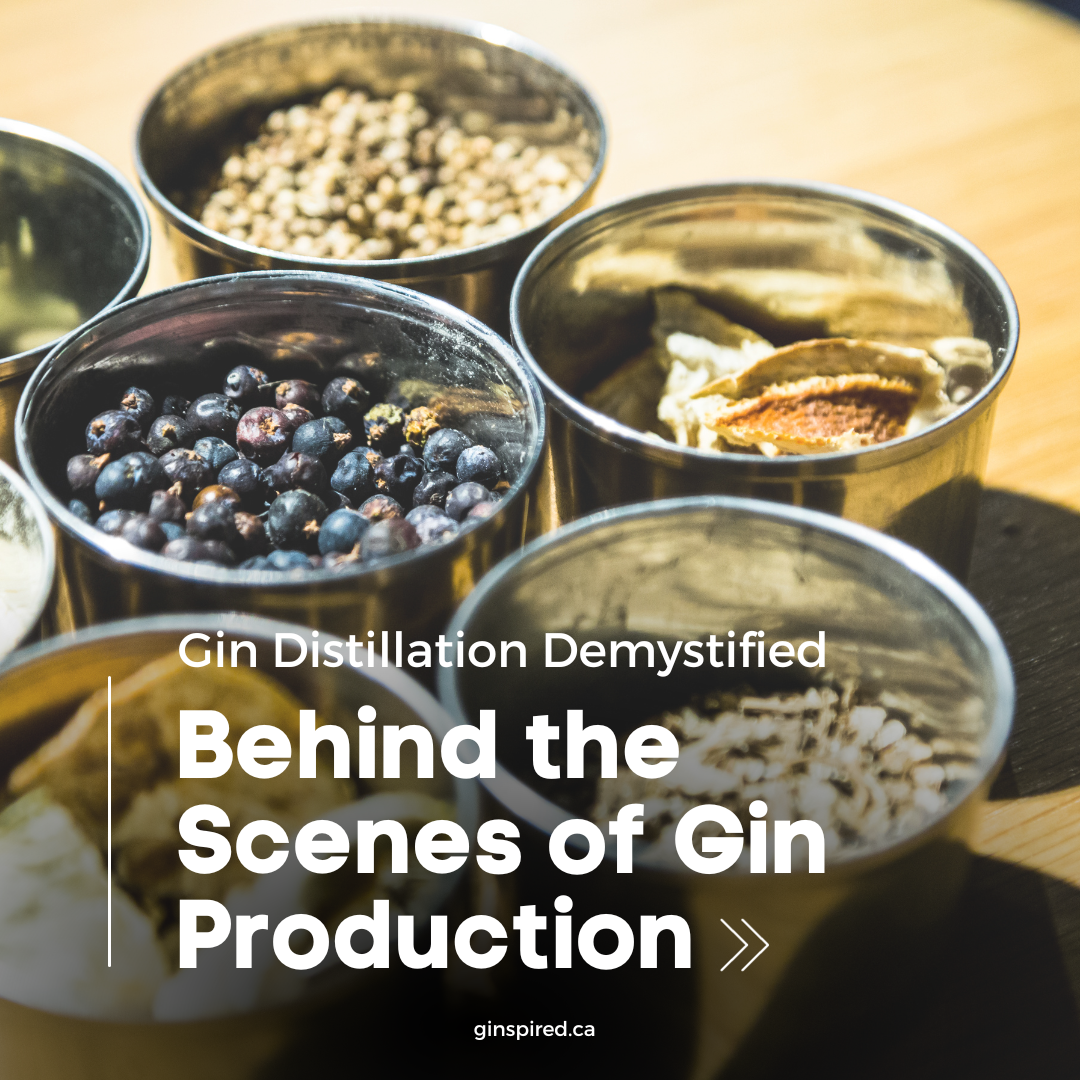Gin Distillation Demystified: Behind the Scenes of Gin Production

One of the most common misconceptions with gin is that the spirit is simply flavoured vodka. But the production process is far more complex than sprinkling the essence of juniper in a vodka.
There are two steps to making a decent gin. The first is to take a neutral spirit (this can be akin to vodka). Once the spirit is created, the liquid is re-distilled, where it’s flavoured with any number of seeds, berries, roots, fruits, herbs, and spices. These flavourings are referred to as botanicals.
Let’s start with step one.
To make the base spirit, distillers take their raw material of choice (grains are popular, though it’s not uncommon to see spirits made from potatoes) and distill them through a pot still. Grain (traditionally wheat, though often barley) is commonly used for this base spirit, but traditional genevers use heavier grains. Nowadays, producers are getting more creative. Potatoes are normal, as are grapes, sugar cane, and even whey and milk.
This is distilled again and again through either a pot still, or continuously distilled through a column still to strengthen (or rectify) the spirit. The more the liquid is distilled, the purer the spirit.
That base spirit is then redistilled through a pot still with a custom blend of botanicals. Every distiller has their own secret recipe - some use a juniper base, while others will lean on ingredients like dulse, spruce tips, rosemary, or other local ingredients that add a custom edge to the spirit.
From here, the distillation method varies from distiller to distiller. Some work with botanicals to extract the oil and flavour the gin as it re-distills. Other distillers add the botanicals to a small shelf in the top of the still. As the steam of the gin rises, it passes through the botanical shelf and flavours the gin. The botanicals only ever encounter the gin as a vapour. When the vapour cools, the gin turns back into a spirit. This spirit is super high-proof (it’ll put hair on your chest!), so distillers add purified water to reduce it to the usual 40% ABV.
Other distillers use the ‘steep and boil’ method. Here, the botanicals are steeped (just like tea) in that neutral spirit created in step one. Distillers will let the botanicals sit for up to 48 hours. As soon as it’s ready, the mixture is redistilled through a pot still.
During distillation, there are three different parts of a spirit that are produced: the head, the heart, and the tail.
The head is the first part of the vapour that comes up through the still. This is the first part of the gin that evaporates: usually methanol and other harmful alcohol. Distillers don’t want that, so the heads are put aside.
The second part of the liquid that turns to vapour and comes up through the still is the heart. This is the good stuff, the purest part of the spirit with the best flavours. Eventually, the hearts are what gets bottled and sent off to be poured in your glass.
The last part of the spirit that evaporates is the tail: sludgy discards that stick to the bottom of the still. The heads and tails can be redistilled to make pure spirits.
What makes a bad gin? Sub-par distillers will skip steps and miss cutting out the heads and the tails, letting sub-par liquid into the bottle. Or, they’ll opt for non-copper stills. While pricier, copper stills are essential in creating super smooth spirits. The copper removes unwanted sulphur that can form in spirits (you know, the stuff that makes the smell of rotten egg - not ideal for a G&T).
This is the nitty gritty, but there are a number of factors that can impact the quality of the gin.
The first is the botanicals. A distiller can decide on their blend of botanicals, but botanicals are based on natural plants. Some growing seasons may produce a bounty of botanicals, but if it’s rainy one year, distillers may face a shortage of their botanicals. Even the world’s juniper is mainly found in nature - not juniper farms - so a bad crop can cripple the gin world.
Every ingredient, including the water, can affect the final product. Regular tap water won’t work; the water used for distillation needs to be purified or filtered. Some distillers like to flex unique water sources like underground springs, mountain snow, or even iceberg ice.
After deciding on botanicals, water, and their distillation method, it’s up to the distiller to either bottle the gin, or play around with aging and flavourings.
Quality control is paramount in gin production. Distillers conduct rigorous testing throughout the process to ensure that each batch meets the desired standards. This meticulous attention to detail guarantees consistency and excellence in every bottle.
So next time, you sip your favourite gin cocktail, take a moment to appreciate the craftsmanship and artistry that goes into each bottle. Gin distillation is a blend of tradition and innovation, a symphony of flavours orchestrated by master distillers who transform humble ingredients into the spirit that has enchanted ginthusiasts for centuries.